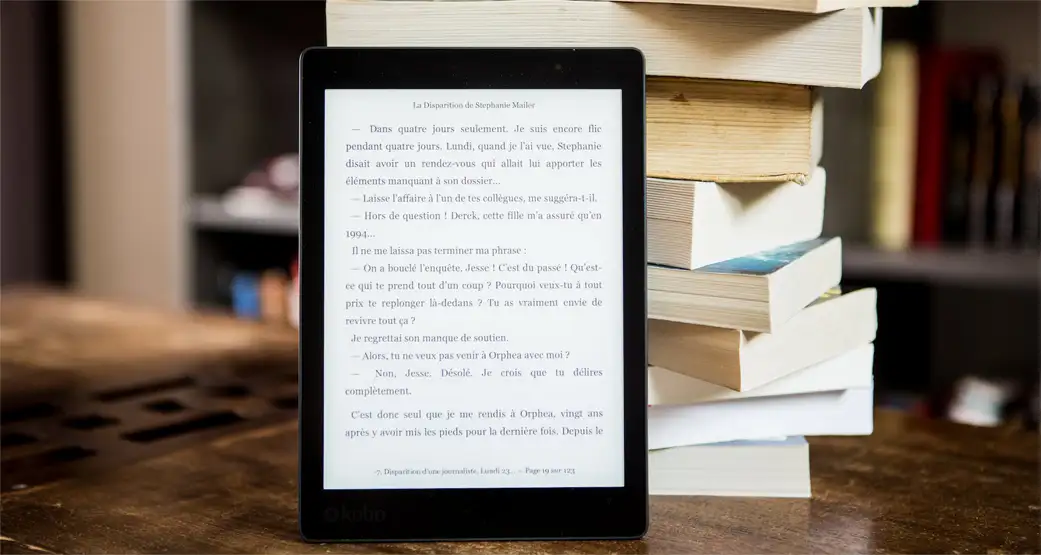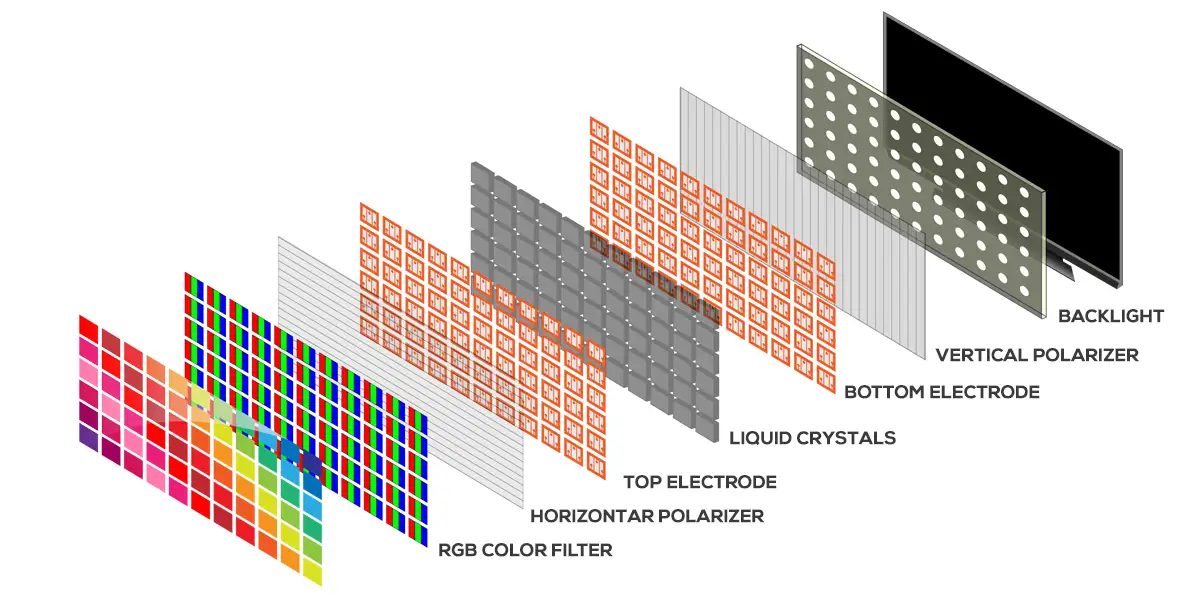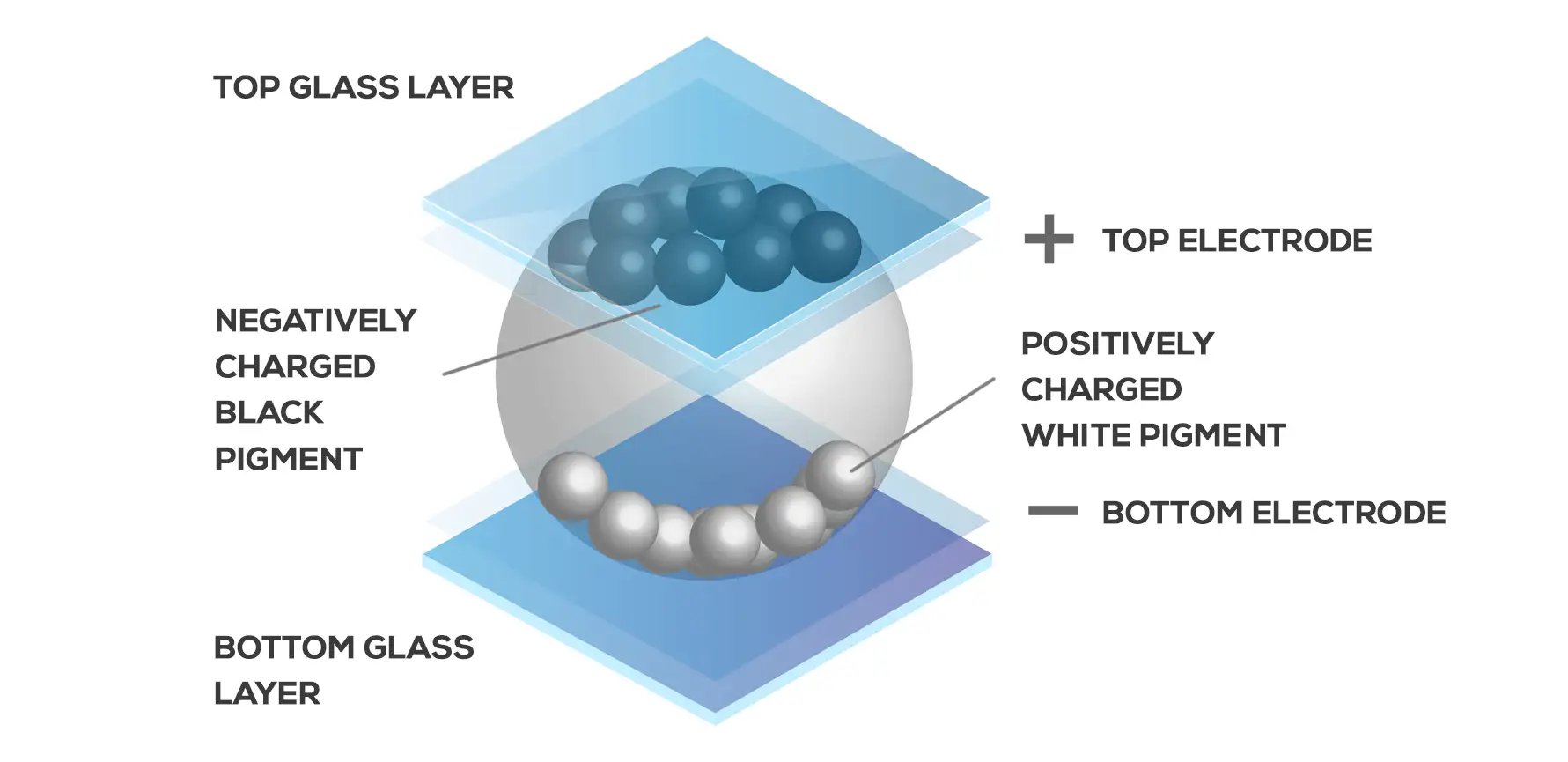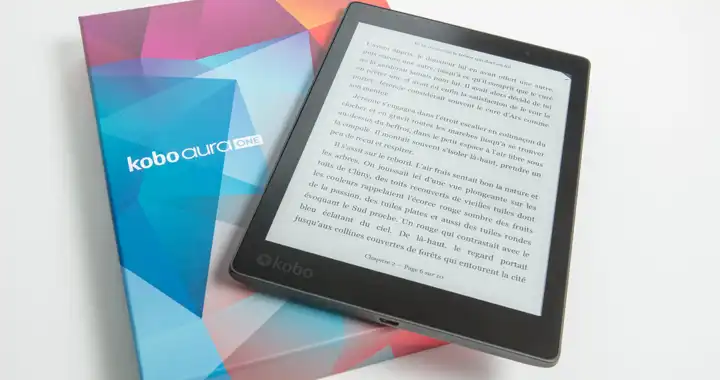Display technologies like LCDs are present everywhere from smartphones to digital billboards on the roadside. Then you have OLED displays which produce their own light and have incomparable contrast ratios and picture quality.
However, E-readers like Amazon’s Kindle and Kobo use a display technology which is very different from OLED and LCD displays. These displays are ideal for voracious readers who do not prefer an electronic display for long reading sessions because of its blue light or glare which can be uncomfortable to the eyes.
How are E-Reader Displays Different from LCD or OLED Displays?

E-readers use a display tech which is called E-ink display or Electronic Paper display. These displays, unlike the LCDs and OLED displays, can work without producing any light. They can reflect light off their surface making them visible even when the backlight is not present or switched off.
This is because their pixels or the individual dots making the image are constructed using different materials and their design uses a totally different concept than that of an LCD or OLED display.
To better understand the pixel of an E-ink display we would first have to understand the design of a Liquid Crystal Display’s pixel. In the Liquid crystals display there’s a backlight at the very back which is lined with light emitting diodes or LEDs which produce white light.

This light then passes through a polarizer layer which is actually a PVA plastic sheet which blocks some light and allows only a particular polarization of light waves to pass through. In layman’s terms it is a light filter to make the light emitted from the backlight uniform.
Then we have the TFT electrode layer which consists of a microscopic TFT switch which can be switched on and off by giving it a signal. It also has a thin capacitor which stores charge for a few milliseconds and can power the individual LCD pixel. These parts are a lot smaller than the pixel and therefore do not obstruct the light passing through.
Then we have the LCD layer which actually forms the image on the display. An LCD layer is made up of individual liquid crystals which are placed inside two glass layers like a sandwich. Each pixel is divided into three layers each for the red, green and the blue sub-pixel which form an entire pixel.
A LCD crystal wafer is like a glass window which can be made opaque to block all light or translucent to allow some light to pass through or can be made completely clear to allow all light to pass through. This can be controlled by varying the amount of current passed to the LCD layer. This is how an LCD layer creates an image. The actual image produced by an LCD layer is in grayscale colors.
Then we have the top electrode layer which connects the other end or the negative terminal of the LCD layer. Then we have the horizontal polarizer layer which filters the light once again. Then there’s the color filter layer which gives color to the grayscale image formed by the LCD layer.
How do E-ink Reader Displays Work?
In an E-ink reader display there’s no need for a backlight layer though some manufacturers do add it to make their E-readers work in the dark. Each pixel in an E-ink display is made of tiny microcapsules which are filled with a liquid which has a black and a white pigment. The pigment is made of microscopic spherical particles which are attracted to positive or negative terminals when an electric field is created.

Reversing the polarity of these terminals can also reverse this attraction. The black pigment can stick to the bottom and the white can saturate at the top. This is the basic principle or concept in the design of an e-ink reader pixel.
A single pixel or the microcapsule has the diameter similar to that of a human hair. These pixels are arranged side by side and are attached to a top and bottom transparent electrode layer which sends the signal to these individual pixels.
When the white pigment is at the top it would reflect the white light off its surface making the display look white. Some of the pixels would receive a different signal making them look black on a white background. This is how text or images are produced on the e-ink display.
These are some of the features that make an E-reader better than an LCD display E-reader with a backlight.
E-reader Display is Comparable to a Real Paper Surface
The display pixel design, as we explained above, is totally different from an LCD or an OLED display. It can produce an image or text which looks similar to that printed on a paper sheet.

In fact, it can appear even better than actual paper as it is capable of producing the true white paper color which reflects more light in the blue spectrum making the surface look clean and pure white unlike the paper used in most paperbacks.
E- readers Can Last for Weeks on a Single Charge
The absence of the backlight is an obvious advantage in an e-ink display as it doesn’t need a LED layer behind the screen to be switched on at all times. Also the display in the e-ink reader needs negligible power to maintain its state and is only refreshed when you turn to the next page.
This saves a lot of electricity or the battery. Your display would not consume electricity even when you keep it ON for days.
Thinner and Lighter than a LCD Display.
The absence of the backlight layer and the additional layers like the liquid crystal layer makes these displays a lot thinner and lighter than an LCD display. An E-Ink reader can be made thinner and lighter and easier to carry around.
However E-ink displays do suffer from certain disadvantages and have some limitations when we compare them to LCD displays. Here are some of them,
Mostly Come in Grayscale Color Display
Most e-ink displays in the entry level segment come with a grayscale display that only produce text or images with black and white colors and their shades. There are e-ink displays which can generate color images and text but the actual image looks faded with less vibrant colors and a low contrast ratio.

Also you would have to pay a premium or a higher price for a colored e-ink display. They would cost way more than an LCD display tablet which can be cheaper and do a lot more than these e-ink readers.
Can’t Play Videos and Low Refresh Rates
An E-ink display has a very low refresh rate and response time. A higher response time is needed to play video content which is not possible in an e-ink display. There are some companies which have made displays which are capable of playing videos at a lower frame rate but again you would have to shell out more money to buy them.
So if you are buying an e-reader then you would mostly have to use it to read books and can’t use it to multitask like an LCD display tablet.
Very Limited Options for Buying
There are very few manufacturers which produce E-ink displays. Also a major hindrance in the manufacture and evolution of these displays is the monopoly of E-Ink Corporation which holds most of the patents for the e-ink technology.
A company wanting to manufacture e-readers with these displays would need their permission and will have to pay a royalty fee to obtain the usage rights of the patented technology. Amazon, Kobo Hanvon, Pocketbook, Ematic, and Aluratek are some of the manufacturers which make E-readers.
